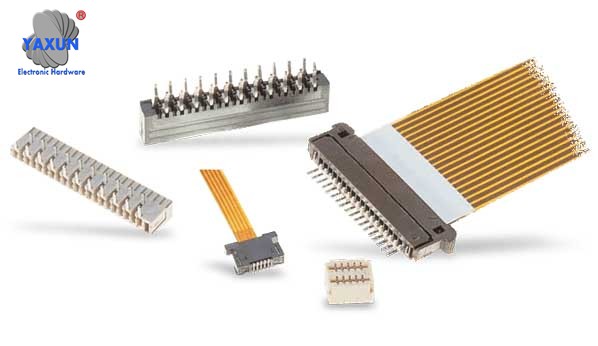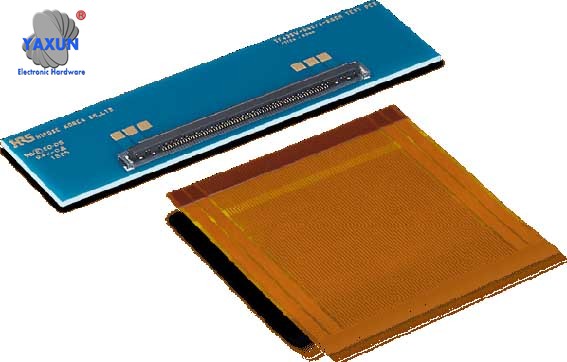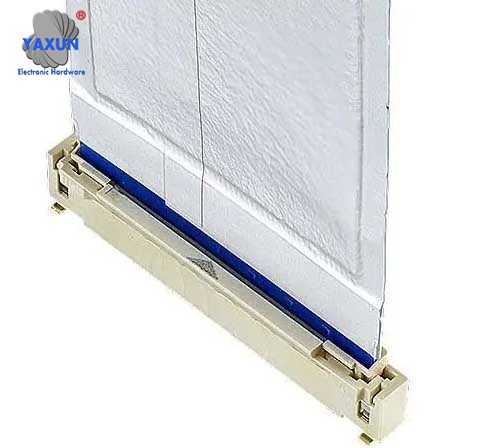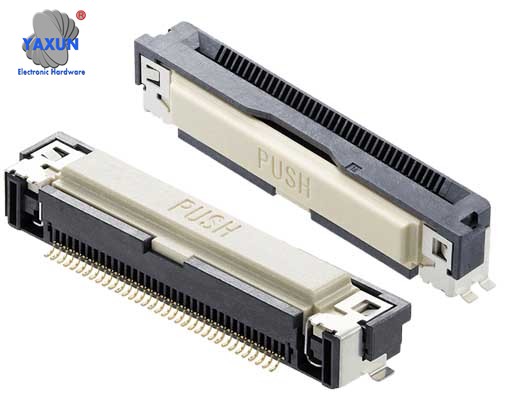FC connectors are used to mate ribbon flat flexible cables (FFC) to PCB circuits in wire-to-board applications. FPC connectors connect flexible printed cables (FPC) to circuit boards. The wiring harness engineer in this article mainly introduces the basic information of FFC/FPC connectors.
FFC connectors are used to mate ribbon flat flexible cables (FFC) to PCB circuits in wire-to-board applications. They are also available in cable-to-cable configurations. These connectors feature high density and very narrow form factors to fit into tight spaces. They are commonly used in consumer applications such as laptops, cameras, computer peripherals, appliances and phones. Single- or dual-row connector housings are typically made of flexible plastic, polymer, engineered rubber, or film that surround the embedded metal connector. Available in a variety of locking styles.
FPC connectors connect flexible printed cables (FPC) to circuit boards. FPC is a type of FFC in which the conductors are printed on the cable substrate rather than embedded in it. FPC/FFC connectors are sometimes called ribbon connectors.
A key reason designers choose FFC/FPC connectors is their increased flexibility when used with flexible cables compared to traditional rigid circuit boards.

Applications of FFC – FPC connectors
ELCO was an early developer of FFC-type connectors and merged with AVX in the early 1990s, with KYOCERA AVX assuming responsibility for ELCO products and continuing to develop its FFC/FPC range.
Although FFC became widely used in the 1970s, the cable was initially only available in direct solder or crimp contact versions. In 1986, ELCO invented the 8370 Series, the first cost-effective snap-on connectors to mate directly on FFCs.
The unique contact actuator design features retaining tabs to prevent accidental actuator separation. The retaining piece surrounds the actuator shaft and hooks onto the cavity, preventing the actuator from opening.

How to fix the FFC – FPC connector
FFC/FPC Connector Design Notes
FFC/FPC connectors are available in pin, socket, snap edge and solder tab contact options with single or dual row housings.
Some variants have the ability to mix FFC cable and round wire contacts to provide a variety of spacings. For example 0.03 mm, 0.5 mm, 1.00 mm, 1.25 mm, 2.54 mm, but the most common spacings are 0.500 mm, 1.00 mm and 1.25 mm. A single FFC can have different spacing between different conductors on the same cable, but this is uncommon.
FFC/FPC connectors are available in fully shielded versions to control EMC interference.
Various locking mechanisms secure this connector type, including latches, pins, and retaining tabs.
Board termination options include surface mount or through hole.

Circuit board terminations are available as surface mount or through hole mounts
0.5 mm pitch shielded FFC/FPC connectors feature one-hand auto-locking, high temperature resistance (125 °C), high-speed performance, and vertical or horizontal mating.
Applications of FFC/FPC connectors
Automotivo, Consumidor, Datacom/Telecommunications, Test & Measurement, Medical, Industrial
FFC/FFP connectors serve numerous markets and applications, including consumer devices, industrial controls, displays, printers, automotive, test and measurement instruments, appliances, and medical equipment.
See: FFC/FFP Connectors for Automotive Applications

FFC – FFP Connectors for Automotive
FFC/FPC one-touch connectors feature single-step mating, an automatic locking mechanism and high retention force for reliable connections and easy operation. These connectors offer a visible release button for easy FFC/FPC cable release operation and a locking nail system to secure FFC/FPC cable connections with high retention force.
 English
English العربية
العربية Български
Български 中文(漢字)
中文(漢字) Čeština
Čeština Dansk
Dansk Eesti keel
Eesti keel Suomi
Suomi Français
Français Deutsch
Deutsch Ελληνικά
Ελληνικά עברית
עברית Magyar
Magyar Bahasa Indonesia
Bahasa Indonesia Italiano
Italiano 日本語
日本語 한국어
한국어 Latīna
Latīna Latviešu valoda
Latviešu valoda Lëtzebuergesch
Lëtzebuergesch Polski
Polski Português
Português Română
Română Русский
Русский Slovenščina
Slovenščina Español
Español Svenska
Svenska ภาษาไทย
ภาษาไทย Tiếng Việt
Tiếng Việt
